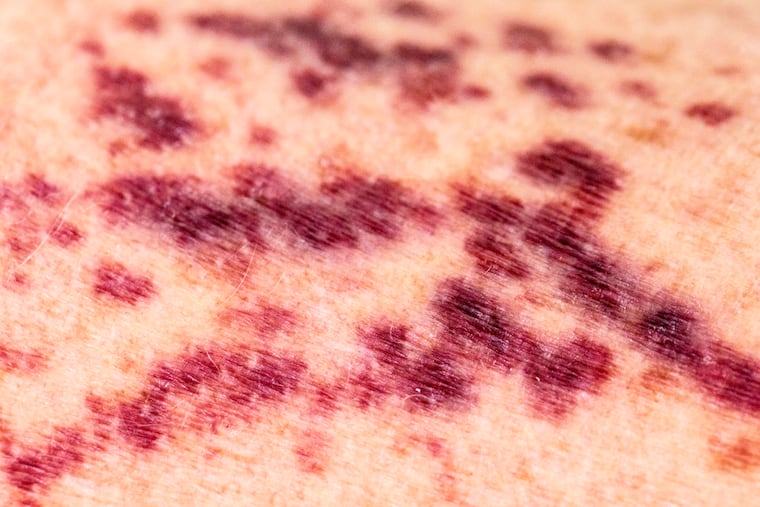Q&A: What is purpura?
Purpura are patches of blood trapped under the skin, outside of a blood vessel.

What are purpura spots? How can I get rid of them?
Purpura are patches of blood trapped under the skin, outside of a blood vessel. Because the blood is not inside an artery or vein and has nowhere to go, when you press it, it does not blanch or change color. Any time we have injuries such as bruises, there will be hemorrhage in the skin with purpura. Smaller purpuric spots, less than 1 centimeter in size, are referred to as petechiae.
Aside from trauma, what leads to purpura in the skin? As we get older, our skin loses its durability and strength due to normal aging, especially from sun exposure. The density of collagen fibers, which gives our skin its tension, remains somewhat stable into adulthood, but then declines as we get older. Many components support collagen fibers, including zinc and vitamin C, which protects the blood vessels from easy injury.
Over time, collagen fibers can be weakened from many forces, such as chronic sun exposure or exposure to such medications as systemic steroids (e.g., prednisone). Patients with vitamin C deficiency, though uncommon, are prone to easy bleeding. (Note that taking oral collagen supplements is not going to help.) People can also get purpura from inflammation (as in an autoimmune process called vasculitis) or even from an infection, such as sepsis. Some people with certain rare, skin diseases (Ehlers-Danlos syndromes, low platelets also known as thrombocytopenia) may be more prone to purpura.
Somewhat commonly, on the legs, blood can leak out of the small capillaries in a “cayenne pepper” color pattern in a condition called benign pigmented purpura. Still, most commonly, many of us will get purpura from sun damage on our skin.
I have many older patients who are endlessly frustrated by how their skin begins to betray them over the years. Even the slightest bump can cause a bruise or purpuric spot for weeks. Many times, these patients can’t even remember a specific injury that caused purpuric spots -- that’s how little it takes.
As frustrating as these purpuric spots are, there unfortunately are no good treatments available. The best recommendation is to wear sunscreen over the years to slow and minimize the effects of sun exposure.
Jules Lipoff is assistant professor of dermatology at the University of Pennsylvania Perelman School of Medicine.